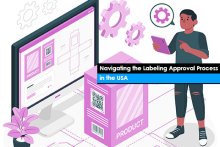A bridge between U.S. and Worldwide Labeling Requirements
The US Food and Drug Administration (FDA) has recently released the optional final labeling rule specific to use of stand-alone symbols in order to align to the global standards for medical device and in vitro diagnostic (IVD). This is the first time that the manufacturers in the U.S. will have the liberty to implement new labels to meet the labeling norms not only in the U.S. but also in the regions except U.S. The FDA expects that this rule although being optional will entice manufacturers, since the workload gets abridged and the overall cost savings can be estimated to touch $25.5 million.
We expect, the final label rule brings a sigh of relief for the manufacturers, since now the obligatory explanatory text next to symbols inclusive of a never-ending list of instructions will no longer be in use. In addition to this, the need to further translate this explanatory text in different languages depending on the regulatory requirements of the regions outside the U.S. will fade away.
Using the Symbols
In order to maintain an appendix of symbols to be used by the manufacturers in the U.S., the FDA earlier established a separate glossary that manufacturers could refer to. As per the proposed rule, the manufacturers can only use the symbols defined in the list created by the FDA. However, after considering the comments provided by AdvaMed (Advanced Medical Technology Association), the final rule now allows the manufacturers to make use of standalone symbols as well as the ones accepted by Standards Development Organization (SDO). The FDA defines the SDO as “an organization that is nationally or internationally recognized and that follows a process for standard development that is transparent (i.e., open to public scrutiny), where the participation is balanced, where an appeals process is included, where the standard is not in conflict with any statute, regulation, or policy under which FDA operates, and where the standard is national or international in scope.”
The U.S. Device Manufacturer’s Benefits
Even though this rule is not a mandate, experts say that implementing this rule will surely be an added advantage for the manufacturers. The huge cost driving the maintenance of multiple inventories of the same product will be abridged, as now the symbol used on the label will be acknowledged all over the globe. The reduced size of the label and the package due to minimized explanatory text will also mark the cost benefits which was not accommodated by the proposed rule. However, to maintain the clarity of the information on the label, manufacturers can simply provide an inline link to the list of glossary for the symbols used on the labels which eliminate the additional efforts.
In Conclusion
We often hear about the need for global harmonization. This is another step taken by the FDA towards the same trail. Though the FDA has made it clear that this is an optional rule to be followed by the manufacturers, it is recommended for the medical device and in vitro diagnostic (IVD) companies in the U.S. to be aligned to this rule in order to cut on the overall labeling costs. This activity demands precision and proficient labeling capabilities to align the use of symbols with the final rule.





